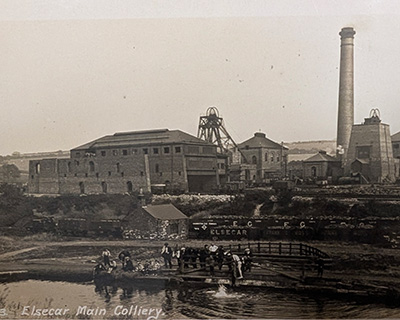RHS Flower Show celebrates a community rich in horticultural history
Designer Chris Myers is bringing the RHS Miner’s Garden to RHS Wentworth Woodhouse. Show Manager Jenny Laville delves into the story behind the garden
Garden designer Chris Myers has the job of creating a feature which reflects the rich horticultural history of the mining community in and around Wentworth. The garden will reflect how miners used their gardens and allotments as an open outside space, far from the dark confines of the pit, as well as to provide for their families.
A history of mining at Wentworth Woodhouse
In 1947, the coal industry was nationalised and a post-war fuel shortage led the government to force the open-cast mining of the estate, where diggers pulled up vast tracts of the beautiful gardens around the house.
Designer Chris Myers says, “As a Yorkshireman, I’m really excited about an RHS Show in Yorkshire and working with the mining community for this garden. I love exploring history within a landscape.”
“I can remember growing up in Yorkshire. The news was full of the miners strikes, it seemed like a world of turmoil.” says Chris. “It will be great to come out of this garden with a positive story showing how they also enjoyed life.” Chris explains, “They were on the breadline, so they had to think of other ways to survive. They grew their own fruit and vegetables and made their own bread. I live off-grid on a smallholding in North Yorkshire, so to an extent, I think that’s how we should still live. It’s almost trendy now to do the things they had to do out of necessity.”
There’s a long tradition of miners gardening. Steve Hickman of Hoyland’s Nursery, whose father worked at Elsecar Colliery, remembers how it was connected to the Fitzwilliam estate via a private trainline. “We lived five miles from the estate and my dad used to grow too. There was a lot of competition between the miners at the shows, but then during the week, down the mine, they would die for each other.”
Barry Proctor of Proctor’s Nursery grew up in Stoke on Trent, a mining community in the 1950s and 60s. He remembers one old miner growing leeks and chrysanthemums in a greenhouse next to his school for the competitions in October and given away at Christmas. “A lot of these miners came from a farming background, and they kept this connection with the land. They prided themselves on being able to grow flowers for their wives and mums.”
“My uncle worked on a 3ft coal face. They had to crawl for half a mile a mile underground. It doesn’t bare thinking about. It was a dangerous place and when they came out, gardening was a release, they wanted fresh air and to spread joy – it will have been a contrast to their day job.”
“There would be a competition every October, with prize money and probably a few side bets as well! My uncle made quite a bit of money with his Chrysanthemums. It was such a strong community and it’s something we shouldn’t forget.” says Barry.
Stella Exley of Hare Spring Cottage had a dad and a granddad who were both miners. She vividly remembers the tin bath her grandad had in the kitchen, which he would use to get clean after a shift. He was also a keen grower. “My granddad George had an allotment, he grew prize chrysanthemums, but he grew veg as well for the family as my dad was one of nine children, so he had to grow to feed them. For them it was hand-to mouth.” says Stella.


